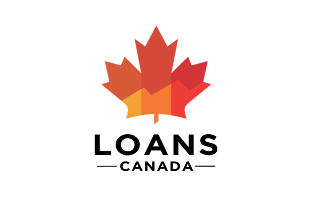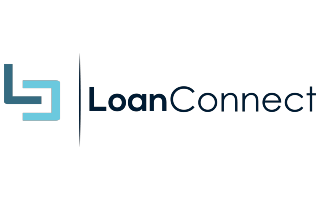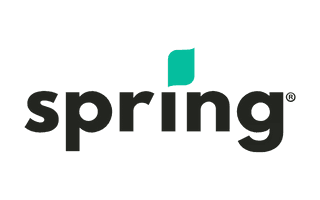Post-secondary education isn’t cheap — according to the federal government, on average you can expect tuition fees of between $2,500 and $11,400 a year. But if you need higher education to get the career you want, student loans can help cover the cost of school.
In this guide, we’ll walk you through your student loan options, including government and private student loans in Canada. We’ll also show you how to find the best student loan for your needs.
Where can I get a student loan?
There are four places you can get student loans in Canada.
Federal government
The Government of Canada offers student financial assistance under the Canada Student Loans Program. Loans are available for full- and part-time students, with eligibility determined based on financial need. You can access funding to cover up to 60% of your tuition costs.
As of April 1, 2023, federal government student loans no longer accrue interest, but you’ll need to start repaying what you borrow six months after you graduate or finish studying.
Provincial government
Provincial and territorial governments across Canada also offer their own student financial assistance programs. Loan amounts and terms vary depending on where you live, but you’ll need to be studying at least 60% of a full-time course load to be considered a full-time student.
Financial institutions
Once you’ve exhausted your options for government student aid, you can also consider taking out a private student loan. Banks and other major financial institutions across Canada commonly offer student lines of credit to help you cover the cost of tuition, books, housing and more. These provide access to a preapproved credit limit whenever you need funds, but you only pay interest on the money you use.
Alternatively, you could consider taking out a personal loan to cover the cost of education. Interest is typically higher (but not always) than with a government loan and starts accumulating as soon as you take money out. You’ll often have to start making payments on your loan from the moment it gets issued or after a grace period after your studies, depending on the lender.
Private lenders
Private lenders also offer student loans and lines of credit. These online lenders often have more lenient eligibility requirements than banks and credit unions, so it may be easier to qualify for funding. But high rates and fees often apply, so it’s important to be aware of the cost of borrowing before you apply.

- Accepts bad credit borrowers
- Easy online application
- Quotes from multiple lenders
- Access cash within 1-3 business days

- Accepts bad credit borrowers
- Quotes from multiple lenders
- Pre-approval in 5 minutes
- Funds in as little as 24 hours
Government student loans by province
| Province | Maximum amount | Eligibility requirements |
|---|---|---|
Alberta | Lifetime loan limit for full-time students
Part-time students: $10,000 |
|
British Columbia | $50,000 |
|
Manitoba | Full-time students: $500 x the number of weeks in 1 program year Part-time students: $10,000 |
|
New Brunswick |
|
|
Newfoundland and Labrador | $100 per week of study (Up to $135 per week for Memorial University medical students) |
|
Nova Scotia | $200 a week |
|
Ontario | Full-time students
Part-time students
|
|
Prince Edward Island | $209 per week of study |
|
Quebec | Full-time students: $30,000 – $70,000 for university study Part-time students: $8,000 |
|
Saskatchewan |
|
|
Bank student loans in Canada: Are you eligible?
Banks also offer financing solutions you can tap into as a student. While federal and provincial government loans typically offer a greater range of funding options designed especially for students, private student loans in Canada usually offer faster access to funds and are more flexible. However, it’s often harder to qualify for a bank loan as a student.
Many students haven’t yet built a strong credit history. Because lenders usually require you to be in steady employment, receive a minimum income and meet credit score requirements, you might want to bring on a parent as a cosigner. Alternatively, your parents might prefer taking out a personal loan in their own name.
You’ll need to meet common eligibility requirements that include:
- Steady income
- Good or excellent credit
- A strong credit history
- The age of majority in your province (18 or 19 years old)
- Canadian citizen or permanent resident
- Debt-to-income ratio (DTI) below 40%
Can you apply for private student loans in Canada?
Yes. If you don’t qualify for a government student loan or you still need extra funds, you can apply for funding from a bank, credit union or private lender.
If you already have a relationship with a bank or credit union, they’ll likely be your first port of call. If you can point to a long history of banking with the same institution, it may help you qualify for a loan.
Alternatively, you might like to apply for a loan from a private lender. These alternative lenders tend to have more lenient eligibility requirements, so it may be easier to qualify even with limited credit history. But you’ll need to watch out for high rates and fees, plus do your due diligence to make sure you’re dealing with a reputable lender.
There are two types of private student loans you might like to consider: student lines of credit and personal loans.
Student lines of credit
Many Canadian banks, including the Big Five, offer lines of credit specifically designed for students. Student lines of credit are commonly used as an alternative when you don’t qualify for government loans or you need more money to pay for school.
A line of credit is an amount you’re approved to borrow, and you can access funds up to a set limit whenever you need. For full-time students, amounts generally fall between $10,000-$20,000 per year. Higher credit limits are often available for medical and dental students or those engaged in professional graduate programs.
Line of credit interest rates are variable and are usually a small increment above the bank’s prime rate. You only pay interest on the money you actually use, but unlike with a government student loan, you’ll need to start making interest payments straight away. You’ll often also have the option to make interest-only payments while you’re still in school, then start paying off the principal after you graduate.
However, be aware that having a student line of credit could affect how much you’re eligible to receive from other sources like scholarships, bursaries and government loans.
Personal loans
You could also apply for a personal loan from a bank, credit union or private lender to cover education costs. Your options for personal loans may be limited if you’re still hitting the books and not bringing in much income. But many banks and lenders accept cosigners, which can help you qualify for a lower rate and better terms than you’d find on your own.
Personal loans typically range from $500 to $50,000. Interest rates vary based on your income, credit score, existing debt load and other factors. Terms generally last 3 to 60 months.
The main benefit of a personal loan is that there are no restrictions on what you can use the money for. But there are a few downsides to be aware of:
- Requires an income (and/or a cosigner). Working while in school can be challenging. Plus, your income may be too low to apply without a cosigner with traditional lenders.
- High rates. Personal loans usually have higher interest rates than government student loans. And as of April 1, 2023, federal government student loans no longer accrue interest.
- Not designed for students. Unlike traditional student loans, you usually have to start paying back personal loans straight away.
Why is it difficult to get a personal loan as a student?
There are a few reasons why you might struggle to qualify for a personal loan as a student:
- No credit. Unless you’ve taken out loans or credit cards before, you won’t have a credit history. This will make it harder to access private student loans in Canada since you can’t show the lender that you have a good track record of repaying your loans on time.
- Low income. Most students don’t have much money coming in, which makes it difficult to meet a lender’s minimum income requirement.
- Lack of assets. If you don’t have any assets to provide as collateral, you won’t be able to qualify for a secured loan. It can be much more difficult to get unsecured loans for large amounts.
- Bad credit. If you’ve missed payments on previous loans or credit cards (especially if you have very little credit history), your credit score might be too low to qualify for a loan.
How to get a private student loan
It’s easy to apply for a private student loan online. You’ll need to provide details such as:
- Your name and contact details
- Your SIN
- Proof of ID, such as a driver’s licence or passport
- Income and employment information
If you’re applying for a student line of credit rather than a personal loan, you’ll also need to provide:
- Proof of your enrollment in a course at an eligible educational institution
- An estimate of your education costs
- Information about your financial situation (such as RESPs, scholarships/bursaries and government loans that can be used to help cover your education expenses)
How much are student loans in Canada?
The maximum amount you can borrow varies depending on the type of loan you get.
Federal loans
Student loans from the Government of Canada provide a maximum of $300 per week of study. Full-time students can receive financial assistance for up to 340 weeks, but this limit increases to 400 weeks for students enrolled in doctoral studies and 520 weeks for students with a disability.
Provincial loans
Maximum loan amounts vary between provinces and depending on the type of course you are studying. Check the table higher up this page for details of the maximum loan amount in your province.
Lines of credit
Credit limits vary depending on the lender and the type of degree you’re studying. For example, a BMO Student Line of Credit offers access to up to $20,000 per year and a maximum of $80,000 over 4 years. Meanwhile, a BMO Professional Student Line of Credit offers from $1,000 up to $175,000 based on your degree, while a BMO Medical or Dental Student Line of Credit provides access to up to $350,000.
Personal loans
Loan limits vary depending on the lender and your financial situation. Amounts of up to $50,000 are available, but you may not qualify for this amount as a student. Applying with a cosigner or providing an asset as collateral could help you get a larger loan amount.
Other ways to get financing as a student
- Grants. When you apply for student financial aid in your province or territory, you’ll also be assessed to find out whether you qualify for a federal or provincial student grant. Unlike a loan, a grant doesn’t have to be repaid. Eligibility is determined based on your financial need and total family income, and grants of up to $4,200 per year are available for full-time students.
- Scholarships. Scholarships offer financial aid to help you pay for your education, and they’re awarded based on academic merit or other factors. They also don’t have to be repaid. Scholarships are offered by the federal government as well as individual educational institutions and organizations, so it’s worth researching what’s available.
- Bursaries. A bursary is another form of student financial assistance that doesn’t need to be repaid. It’s typically offered based on financial need, so check whether your provincial government or other organizations offer bursaries you may be eligible for.
Bottom line
There are plenty of options for financial aid if you need help paying for school. Federal and provincial government student loans are the best place to start, but private student loans in Canada can also help you cover education expenses. Research your financial assistance options before deciding whether to apply for funding.
Frequently asked questions
Read more on Personal Loans
-
Where to get a student loan when you have bad credit
If you’ve got less-than-perfect credit, here’s how and where to get a student loan in Canada.
-
Student loan regret
Furthering education shouldn’t be a decision you regret, but 81% of Canadians who took out a student loan would rethink their decision. Those findings and more from Finder’s student loan regret survey.
-
How to refinance student loans
Your guide to refinancing student loans to get a lower rate or a more affordable monthly payment.


